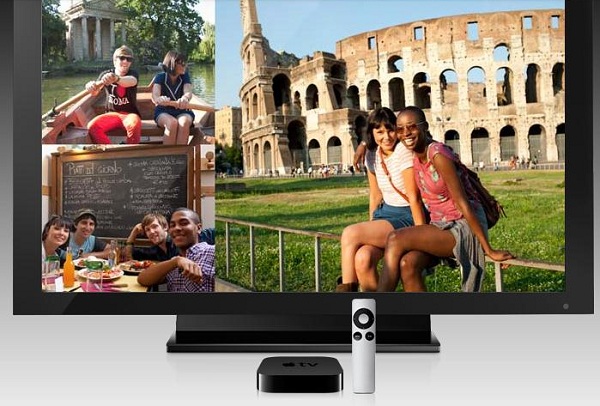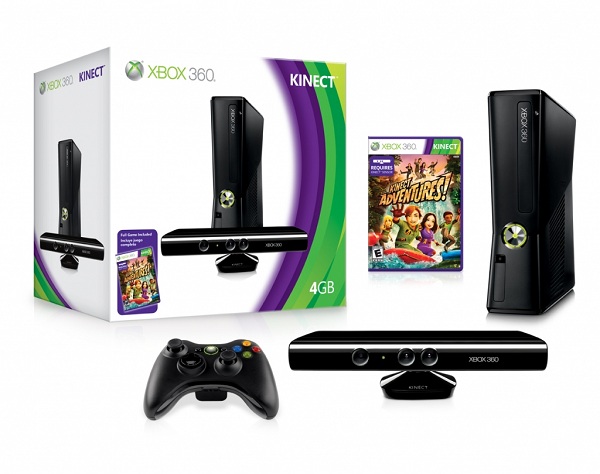Though recently it has been the smartphone market that has garnered the most attention in the tech world, the arrival of a revamped – if slightly disappointing – Apple TV is a reminder that the living room is the next big play for digital transformation.
Think about it: unlike so many other sectors of society, the living room is one in which traditional approaches to media still largely dominate. DVD sales still dwarf streaming and online video in both numbers and revenue, while the web has yet to make any serious inroads onto people’s TVs.
So there is a massive market ready for the taking – if only someone can figure out a way to make money off not only the tons of content floating around out there, but the hundreds of different sources, from cable companies, to online streaming to specialized apps like Netflix.
And while it’s clear that there is always room for multiple players, what has become obvious – and surprising – is that digital media is often dominated by two or three main rivals while competitors are left to fight over the scraps. This has happened with computer operating systems, smartphone OS’s, digital music, video games and other fields.
So when it comes to the living room hub of entertainment, which of the tech giants who currently have a foothold are best positioned to succeed?
Apple
Right now, even with the new Apple TV, Apple are not yet bringing their ‘A-game’ to the media entertainment hub. General consensus – including ours here on Techi – is that the Apple TV is a neat little device, but one that is currently undercooked.
But Apple has two not-so-secret weapons up its sleeve: the iTunes universe; and iOS. iTunes is of course the largest digital media store in the world. Unfortunately, that wealth of content has yet to come to the living room (well, unless you count the iPad you use on the couch as a living room device). If Apple can expand the content available on Apple TV and match the cable networks, it would become much more compelling and perhaps do for set-top boxes what the iPhone did for smartphones.
Speaking of which – the other big benefit Apple has is the App Store. With the infrastructure already in place, if Apple could offer Apps for an updated, faster Apple TV – whether from content partners like Hulu or games – then suddenly, an Apple set-top box could seem like the iPhone a couple of years ago: the kind of product that makes you wonder “why buy anything else?”.
Prospects: Apple’s strengths lie in usability, integration and cutting content deals first. If they can expand Apple TV to be a true replacement for a cable box or a computer, their combination of ease of use and marketing could allow them to dominate another market.
Google’s push into the living room obviously takes the form of Google TV. Unlike Apple TV, however, Google TV looks to layer Google’s software on top of pre-existing services like cable or saellite providers, making it searchable while also adding in YouTube access and Android apps to be used on a TV.
While it has its upsides, it also has some serious limitations. Cable companies, like most large media conglomerates, are concerned with maintaining their hold on a special, privileged distribution channel. By approaching things this way, Google are reliant on other operators to build a living room presence. While the Dish Network has signed up as a partner, when Google starts to offer Netflix, Amazon on Demand or other services, will cable or satellite providers be so eager to hop on board?
At the same time, TV is desperately in need of the kind of fast search and organization Google is able to provide. But right now, one wonders whether Google TV isn’t a stopgap solution to the bigger problem of the increasingly fuzzy line between TV and the Web.
Prospects: Right now, Google TV is an unknown quantity. But its strange in-the-middle position between the on-demand, searchable nature of the web and the ‘chill out and channel surf’ vibe of TV may prove to too ‘unknown’ to catch on.
Sony
As much as Sony may talk about their plans to ‘finally compete’ in digital media, they have struggled in taking their digital plans mainstream. Of course, despite Sony’s efforts at including services on their BRAVIA TVs, Sony’s trojan horse into the living room is obviously the PS3.
In many ways, the PS3 offers an excellent value proposition. Beyond its obvious capacities as a Blu-Ray/DVD player and gaming machine, it also has Netflix, Hulu Plus and its own PSN Video Store. The problem for Sony is that the PS3 is successful within a particular demographic – but not across a wide range of groups. Your average Jane or Joe just isn’t going to pick up a Dual Shock 3 in order to use Netflix when they can use a TV remote or something else more simple.
So for Sony, the big problem is one of usability and market penetration. How do they get into the living room in large numbers in a way that also appeals to mass market users, rather than the PS3’s hardcore, if sizeable, user base.
Prospects: Sony either need a Wii-like approach to simplicity (which PS Move doesn’t seem to provide) or they need to release an Apple TV style dedicated box explicitly for media and streaming services. Given Sony’s difficulty marketing ‘big ideas’, however, perhaps Sony’s best bet is to try and push the PS3 mainstream with a simplified UI redesign that includes Move?
Microsoft
Microsoft have, quite famously, had trouble in their attempts to create a family entertainment hub (see Web TV). But while their previous tries were well-known failures, the Xbox 360 has proved a resounding success.
Though obviously first and foremost a games machine, Microsoft have carefully expanded the offerings on Xbox Live – like Netflix, Facebook, Twitter and now video chat – to a point that’s it simply great. Key here is one simple approach: in a way they’ve never really demonstrated before, Microsoft get what people want from an online gaming service. What’s more, unlike Sony, they didn’t slowly patch in features, but built a system that worked from the start and then augmented it.
But can Microsoft make a real play for the living room? After all, they face the same problems as Sony when it comes to transitioning from a hardcore, techie audience to the mainstream. To do so, they’d need to either expand beyond the Xbox, or hope that Kinect – Microsoft’s controller-less gaming camera system – catches on a big way, become accessible like the Wii while having a much stronger media component.
So strangely, even though Microsoft have, in terms of numbers of installed units, been the most successful of the four companies mentioned so far, they are also potentially in the worst position, as they either have to bolt on to the 360 a service that will appeal to people who have never picked up a game controller, OR offer a service that expands beyond Microsoft gaming hardware. Unlike Sony, who have a wealth of hardware, or Apple who have expertise with ecosystems involving a variety of content and devices, Microsoft have yet to push their success with Xbox further.
Prospects: Microsoft’s best bet is Kinect, and maybe the successor to the Xbox 360. What they need is the brand recognition of Xbox combined with the simplicity of Apple or Nintendo to merge into a seamless, singular branded experience that people turn to for all their media needs.
The Big Questions: Services, Hardware or Both?
What is clear is that right now, no-one is quite sure what the winning formula is. Do you create a service like Netflix that is accessible through a whole whack of hardware? Do you make the hardware and ecosystem for others to display content? Or do you do both, and hope that the integration of hardware and software makes your experience the most desirable?
All four of the companies above have their strengths. Apple have their brand and UI expertise. Google have their software wizadry. Sony have their engineering chops and Playstation brand, while Microsoft have the capacity to reach huge numbers of people. But which model will win out? It’s likely it will still take years to find out.
Who do you think will triumph in the living room? Which of these companies is best positioned to ‘win’? Or is there a dark horse – like Netflix or even Boxee – who will become synonymous with living room entertainment?





I suspect that all these products from Apple, Google, or whoever, will ultimately fail to whatever similar offering the cable/satellite companies come up with…much like is happening to TiVo with cable company versions of the DVR.
I personally think you should have included some open source options in this list.
In my household the majority of the systems are running Linux for both stability & easier networking. I have in process the point of incorporating a Linux based entertainment system which will have 1080p video output as well as full surround sound audio system. This will also act as a central streaming video server as well.
I have never been a supporter of MS based equipment nor software (too over-priced & bloated).
My 2c worth.
I’m surprised to be the first to mention PLEX here on this post. At the moment it runs only on Mac (Windows version coming later this year), but it offers the open platform solution that is missing from all of the above.
Add this to the fact that it will be built in to LG TVs and Bluray players in 2011 (in a non-exclusive deal), and for my money, you have the best scalable solution in existence already, and becoming very easy to use next year. It already features Netflix and Hulu, as well as countless other plug-ins.
Now as a UK user, I’m hoping Netflix becomes available on these shores, as there is nothing that fills that gap here in England. Lovefilm is close, and might grow to be super usable, but it still focuses on the DVD postal solution.
Go PLEX!
http://plexapp.com/press_LG.php
What about Boxee and Roku? I feel that they are a strong contender in the race as well. Of course we will have to wait until November for the Boxee TV box to be released, but it could one up Apple TV in its expansive content roster. For Sony and Microsoft to win video games will have to become more mainstream, which I don’t feel has happen yet. In fact it seems that “motion-controlled” games are not taken seriously anymore by the video game industry and community. I agree that Apple TV missed out on really wowing everyone, that’s why I’m more interested in Boxee.
Although TV makers can circumvent all these companies by developing their own software within their sets that can access the full web, eliminating the need for external boxes, software, or even apps.; a TV/Computer hybrid with a user friendly interface. I get the feeling TVs are heading in that direction, now that their “internet ready”; all you will need is an internet connection and a TV. How simple would that be?
Great article though. I love this site, especially it’s design!!
I think that Microsoft has the best position so far, as for Xbox 360 they’ve released several applications that are really pushing the envelope of what might become a full entertainment system. They have SkyTV (although a bit limited, it still is there), they have Last.fm, and this is a big player for streaming music, finally they have Zune, which is maybe not as big as Apple iTunes Store, but certainly has incredible number of good movies, plus they gather more and more every month.
Even though Xbox 360 doesn’t have Blu-Ray, it certainly has a lot of accessories that could help with the experience, like X360 Media Center Remote, which is cheap and widely available, plus on top of this: when you bridge your computer with X360 Media Center, you can play almost any videos on you HD TV screen. That is good.